Want independence from water utilities? Here are a few suggestions that may help you find the equipment you’re looking for.
Taking your home off-grid and relying on an independent water supply is one of the most nerve-wracking elements of the process. Many people choose to stay connected to a water utility but supplement it with wells, rainwater collection, or even greywater systems. Whatever your aim I’ve found some of the best, most reliable kit to get you started.
Collection and storage
For those of us not lucky enough to have well or river on our land, rainwater may be the only option when it comes to an off-grid water supply. Whether you want to reduce your water bill by collecting some for use in your garden or you want to meet all your water needs with a rainwater harvest, there is a system for you.
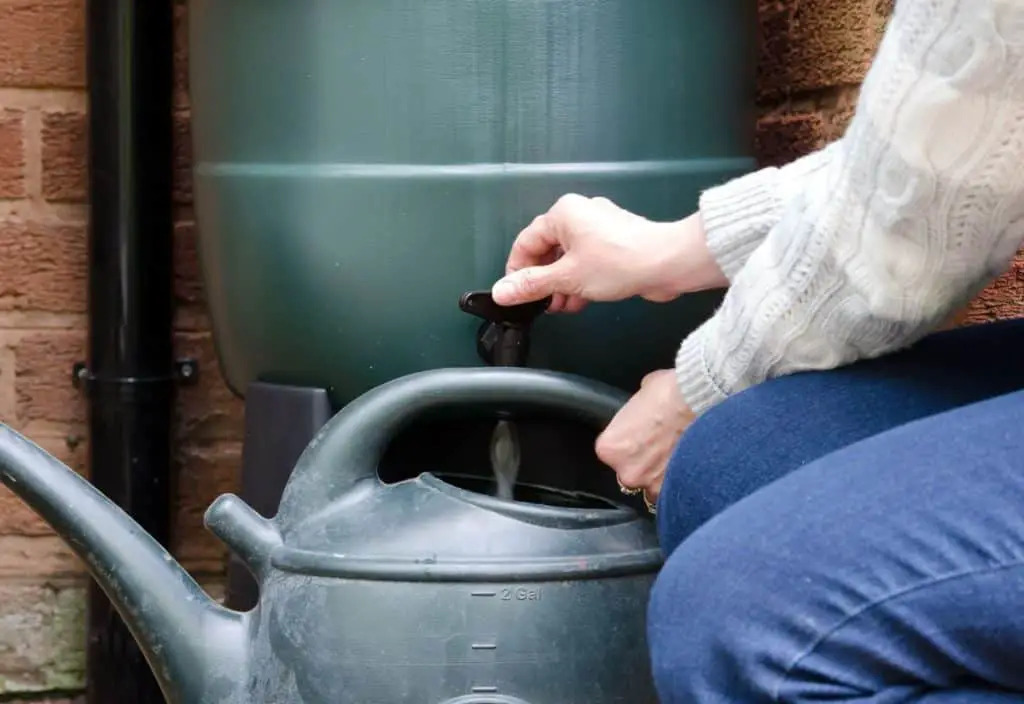
All rainwater collection systems start with your roof surface, guttering, and one, or several, downspouts. Gutter strainers and filters are also essential to keep as much debris as possible out of your water. For every inch of rain that falls on a square foot of your collection surface, you can yield 0.623 gallons.
1″ of rain x 1 sq. ft. = 0.623 gallons
Before you plan your system, visit WaterCache.com, and use their rainfall indicator and calculator to estimate your year’s water harvest. This will give you an indication of how much water you can expect to harvest during a year and how big your storage tanks will need to be.
Depending on how much you want to store and what you are planning on using it for, you can choose between 3 systems:
- Rain barrels – These are ideal if you are harvesting a small amount to water the plants in your garden. A decent-sized barrel will store 50 gallons and can feature a tap for you to use the water whenever needed.
- Dry system – This is when you install a large-volume container next to your house that collects water directly from the downspout. When there is no rainfall, the pipes feeding into the storage container are dry, hence the name.
- Wet system– These are large-volume tanks that are usually underground or partially under the ground. They are situated away from your house, and the pipes from your downspout run underground. A siphon is used to propel the water into the tank, so the pipes must be leakproof and are full of water.
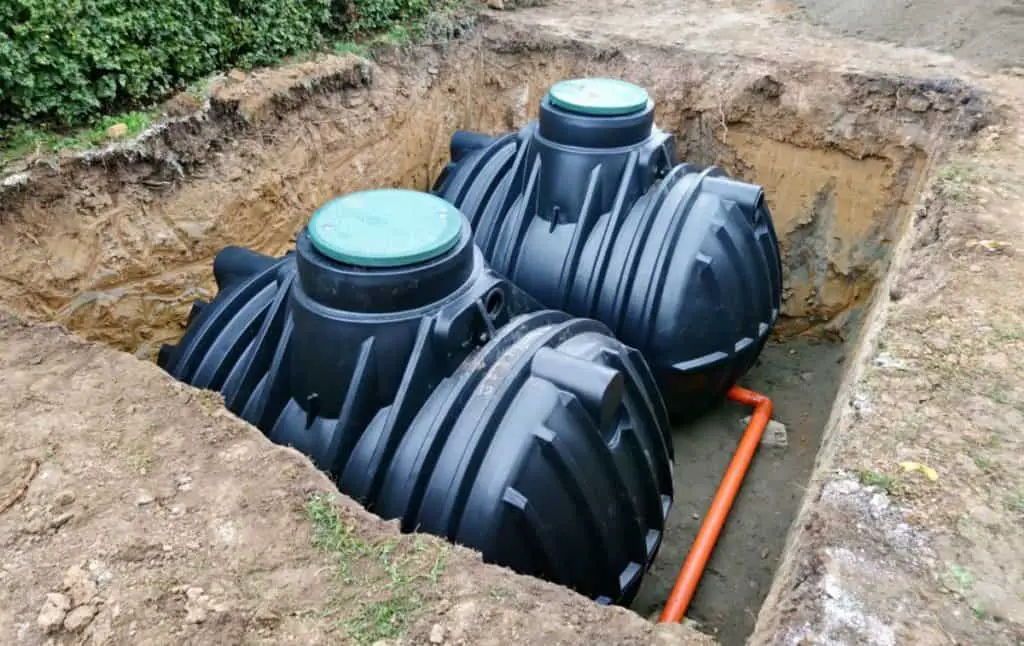
If you want to run your home’s water supply from rainwater, a wet system is most likely to give you the storage you want. They can be completely underground so that you can store huge volumes of water reasonably inconspicuously. This system is the most complicated and involves pumps and filters to get clean water where you want it for use.
If you want to make a change to your water utility bill now but can’t yet afford a wet system, starting with one or two 50 gallon barrels to collect water directly from your downspout is a good idea. They are easy to install and will provide you with a handy supply of water for your garden.
- 66 Gallon collapsible rain barrel – This is a straightforward 66-gallon collapsible barrel with a convenient spigot, ideal for getting you started with rainwater harvesting. I prefer these because they’re easy to manoeuvre into place and you can store them away when they’re not in use.
Purification and filtration
Once you’ve successfully stored your rainwater, you may want to use it in your house or even for drinking. If you do decide to do this, you will need to make sure that it is completely clean and safe for use. Taking rainwater and making it safe for use as drinking water is a complicated process with several stages.
- Pre-filtration– This is a simple filter that gets rid of the largest debris particles before you store the water.
- Filtration – when the water is pumped from storage for use in your house, it then undergoes filtration to remove all fine particles. For most water use, this is enough, but if you want to drink the water, it should also be purified.
- Purification – This removes bacteria and contaminants to make it safe for use. This is crucial to produce safe drinking water and can be done in a variety of ways.

Aquasana provides a product range at Home Depot that combine multistage filtration and purification. The complete systems can run into thousands of dollars, but because you get most of the filtration and purification on one unit, it’s worth it. You will still need pumps and prefilters, but the Aquasana range is a good start.
- Aquasana Whole House Well Water Filter System with UV Purifier -This system filters and purifies your water, whether from a well or harvested from rain. It uses UV light to remove bacteria and viruses.
Composting toilets
There are lots of ways you can deal with your sewage and waste in your off-grid home. Including installing your own septic systems to process your waste, but by far, the simplest method is the composting toilet.
They can either be built yourself cheaply as seen in the video below, or purchased as an all in one unit. Not only will they deal with your waste, but you also get a useful byproduct that can be used in your garden.
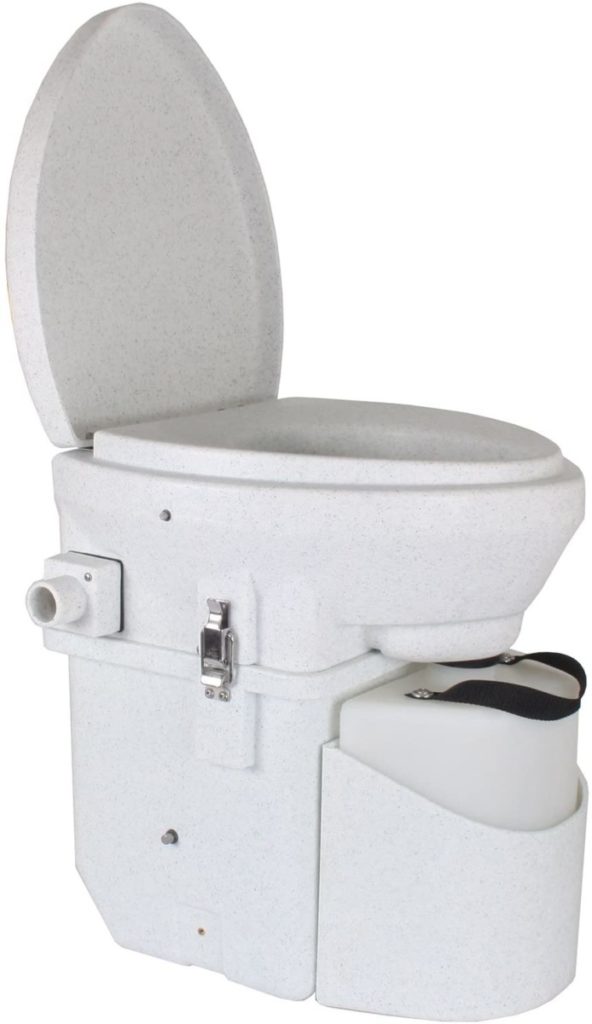
If you’re concerned about the smells associated with composting toilets, your best option is the Nature’s Head toilet, originally designed to be used on boats; it is a compact all in one system that, incredibly, minimizes odor.
- Kildwick Klassic Urine Diverter – These are useful if you’re making your own toilet, but there are other options if you get creative.
- Nature’s Head Composting Toilet – Initially designed for boats or campers, these self-contained toilets are also great for off-grid homes if you decide to cut down on mains sewerage.
- Biogas Toilet – This is an incredible system that collects waste and uses it to produce gas that can be used as a fuel for many other items. It’s truly revolutionary.
Handy tools and equipment
Whether you’re installing a septic system, removing a toilet, or just changing a flush mechanism, in plumbing, having the right tool can save you hours. I’ve learned the hard way that if the job seems impossible or awkward, then you’re probably not using the right tool.
Wrench sink installer
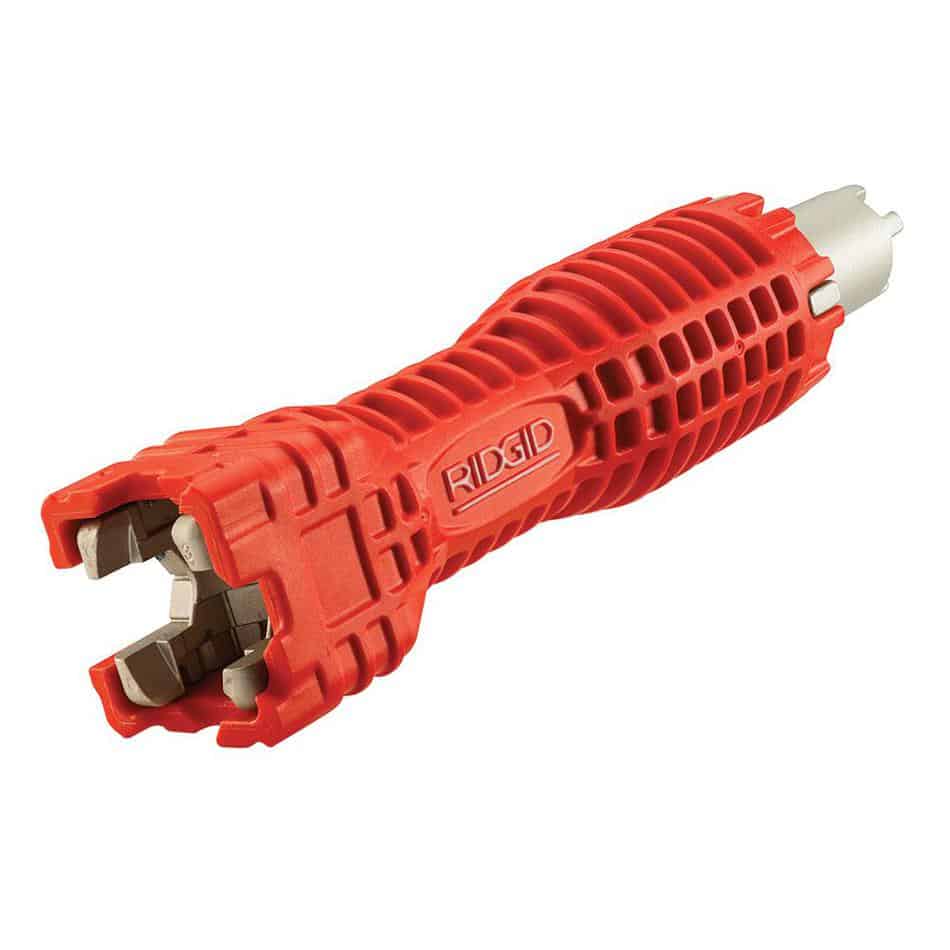
If you’re sick of hanging over the back of a cistern trying to attach a pipe securely, you need one of these wrench tools. They wrap around the pipe and make the job so much easier.
- Ridgid EZ Change Faucet Wrench – This is a basic model, but it’s sturdy, and because it’s such a specific tool, you don’t want to spend too much.
Basin wrench
This is another tool that saves hours of sweat by allowing you to deal with those annoying fixings behind toilets and sinks efficiently.
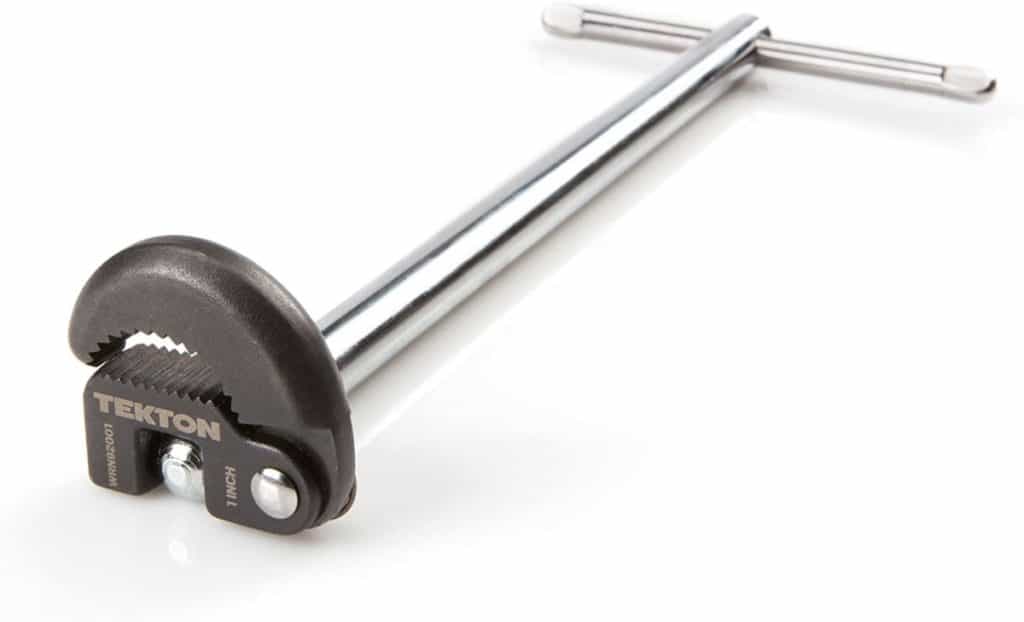
- Tekton basin wrench with 10 to 17 inch reach – This will give you lots of reach, and the grip is wide enough for most jobs.
Adjustable wrench
An adjustable wrench isn’t necessarily for plumbing but is an essential item for your toolbox and can get you out of many tricky situations. When venturing behind a cistern to wrangle with a flushing mechanism, I make sure this is never far from my reach.
I used to struggle with a standard-sized one, but I’ve since discovered these small 8-inch versions with an extra-wide grip. If you’re faced with something that your faucet tool and basin wrench can’t manage, a small adjustable wrench might get in there and do the job. Whether its plumbing or woodwork, get yourself one of these, you won’t regret it.

- Chanellock 8inch Wide Jaw Adjustable Wrench – You can get decent adjustable wrenches for about $6, but this one from Channellock caught my eye and has proved itself a hundred times since. It opens up to 1.5 inches, with a precise gauge and tight mechanism which works perfectly. The grip is particularly useful when trying to wield it in small spaces.
Pipe wrench
If you’re doing general plumbing around the house or are fitting a wet storage tank, you will need to fit pipes securely. Pipe wrenches are your go-to piece of kit in this scenario. I inherited one of these from my dad, it was about 60 years old and weighed about the same as two bull elephants, but it did the job.

I’ve now got a new one, and they are equally as useful but lighter and easier to use. This is one of those tools that comes in handy whatever job you’re planning.
- RIDGID 10-inch Heavy-Duty Straight Pipe Wrench – There’s still some weight in this one, but it’s well made and performs well at the job it was intended for and doubles up for many other uses. You can get lighter, more expensive versions, but unless you’re going into business as a plumber, this is ideal.
Plumber’s tape
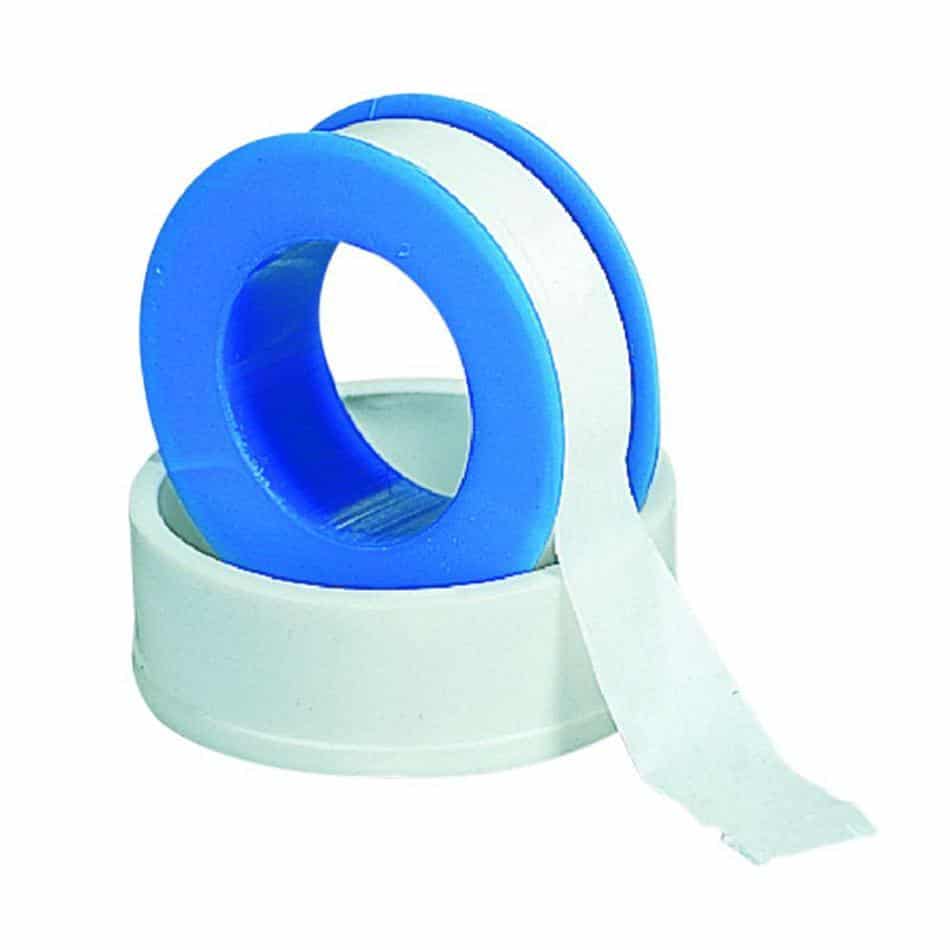
I can think of so many situations when this would’ve come in handy if I’d known it existed. This is a simple tape that you can wrap around the thread on pipe joints and gets you a perfect watertight seal. It’s simple, but it’s a total gamechanger.
Related Reading
If you’re looking for other tools, equipment or reading materials, I have some more lists that you may find useful:
